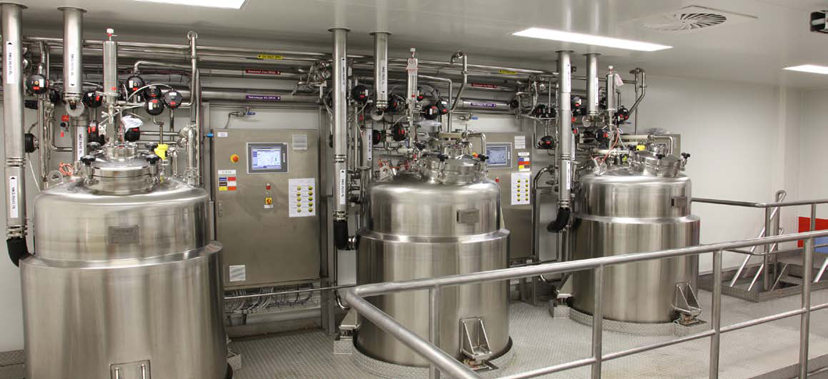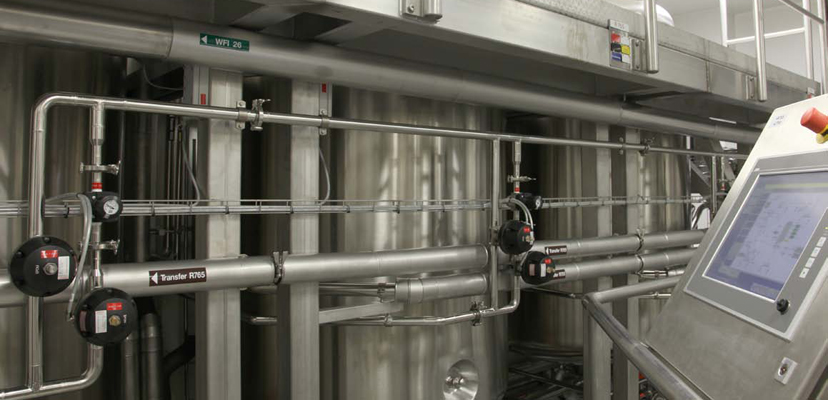


A central process control system is not sufficiently flexible or too expensive for many companies. The engineering office for process automation/ control, pac GmbH here relies on control units by WAGO. In a project for biotechnology at Novartis, a remote system had to prove itself as a control unit for process systems in conjunction with a central monitoring system.
Novartis operates many multi-purpose systems in the field of biotechnology, which are not geared to mass production with fixed production processes. Production and processes change regularly, a central process control system is therefore too inflexible. According to the requirements of ERES (Electronic Records – Electronic Signatures) and the FDA (Food and Drug Administration), 21CFR Part11, data and user interventions, such as settings and configurations, however, would have to the recorded during production and stored securely. This logging was previously associated with a great manual effort.
Autonomous automation solution
As an alternative to a central process control system, Novartis decided to set up a remote process controller by pac GmbH using the technique of WAGO. Industrial PCs control the individual systems. The control panels are on site. The control units are connected via ETHERNET. The sensors/actuators on the IPCs can be switched via I/O terminals. In addition, the IPC activates the Festo valve terminals via PROFIBUS. A central log server records the process data and logs all alarms, faults and user input according to 21CFR Part11. “The WAGO IPC is predestined to be a decentralized process controller thanks to three particular features,” says Jürgen Sütterle, the CEO of pac GmbH. From his point of view, the IPC could also be called I/O-PC because it can be mounted directly on the 24-volt level on the top-hat rail and connected directly to I/O modules. “Furthermore, it has the properties of a classic PLC: it is robust, small, and program-CONTROLLING PROCESSES mable according to IEC 61131 like a programmable logic controller. Finally, as an IPC it integrates the open standards of the PC world.”
Flexible and modular control unit
“In process automation, we frequently need an alternative for large and complex control systems. This easy to use PLC, however, must still meet the highest quality demands. The WAGO system has positioned itself here and proven itself in practice. It uses standard hardware, standard protocols, as well as standard interfaces. We therefore can select various suppliers for the peripherals. If a terminal malfunctions, we only need to replace it and not the entire assembly. Even the programming using standard tools such as CODESYS or MS- SQL server makes the solution much more cost-effective,” added the manager of the engineering office. He especially appreciates the flexibility in the integration of sensor and actuator signals.
Practical decentralized solution
The decentralized process control has proven itself at Novartis. In a preparation system for the extraction of an active ingredient, first different media are added, and in another process they are stored and conditions in a second group of machines. The controller ensures that there is a ring line for the process-appropriate addition of common resources such as cleanser, steam, and distilled water, and it performs coordination tasks such as filling in mobile containers, the transfer between the machine groups, and the control of valves. The production data is stored and evaluated centrally. Via view stations distributed across the building, the system operators also have access to current and historic process data; mobile call-up stations via WLAN are also planned. The standardized interface of the logging system has proven very helpful for the incorporation of different suppliers’ machine groups. A Siemens control unit can also be connected via a PROFIBUS coupling.
The challenge of changing system inserts and changing processes could also be easily solved with the decentralized approach. “The system control is cost-effective and functional due to the modular structure. Control functions, such as ‘agitating’ are distributed into basic functions according to NAMUR recommendations and can be reused at another point. We were able to reduce the testing effort overall and the tests of individual modules by this copying effect” reports Jürgen Sütterle. From the view of the automation engineer, the easy and uniform operating concept also on various equipment groups has contributed essentially to the acceptance by the employees. The training effort was therefore kept at a minimum.
Text: Martin Orties
Photo: Novartis, WAGO